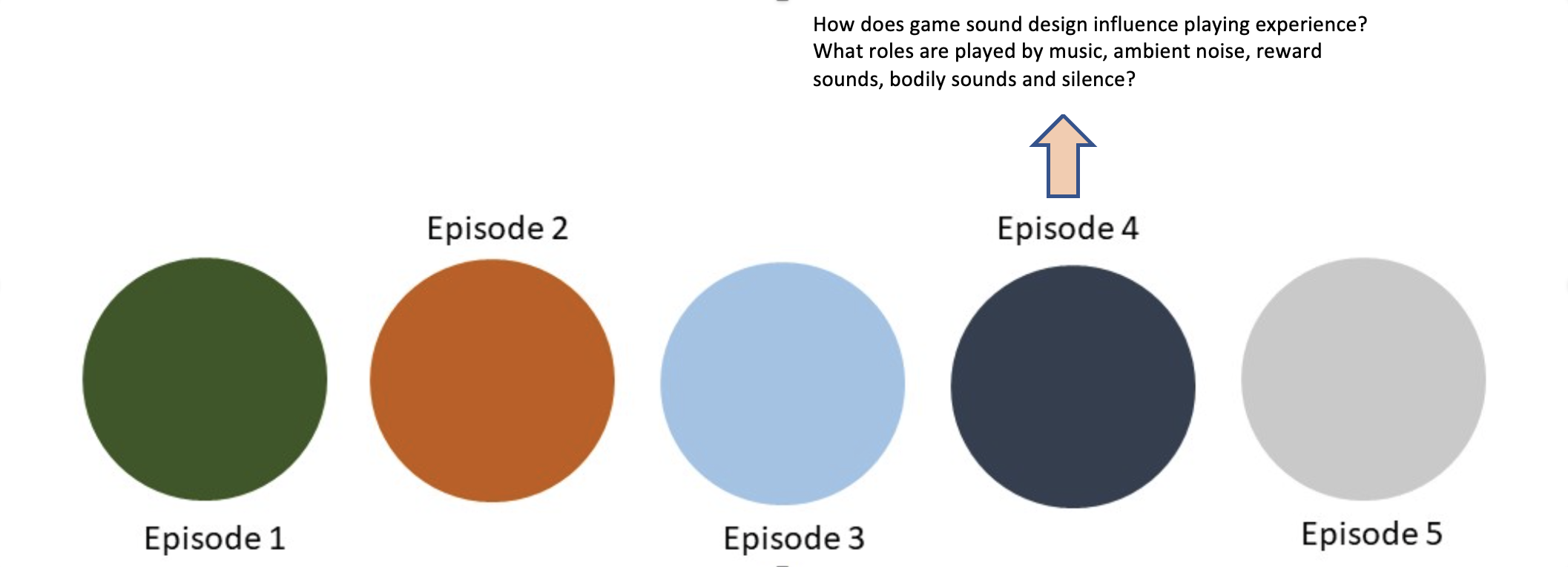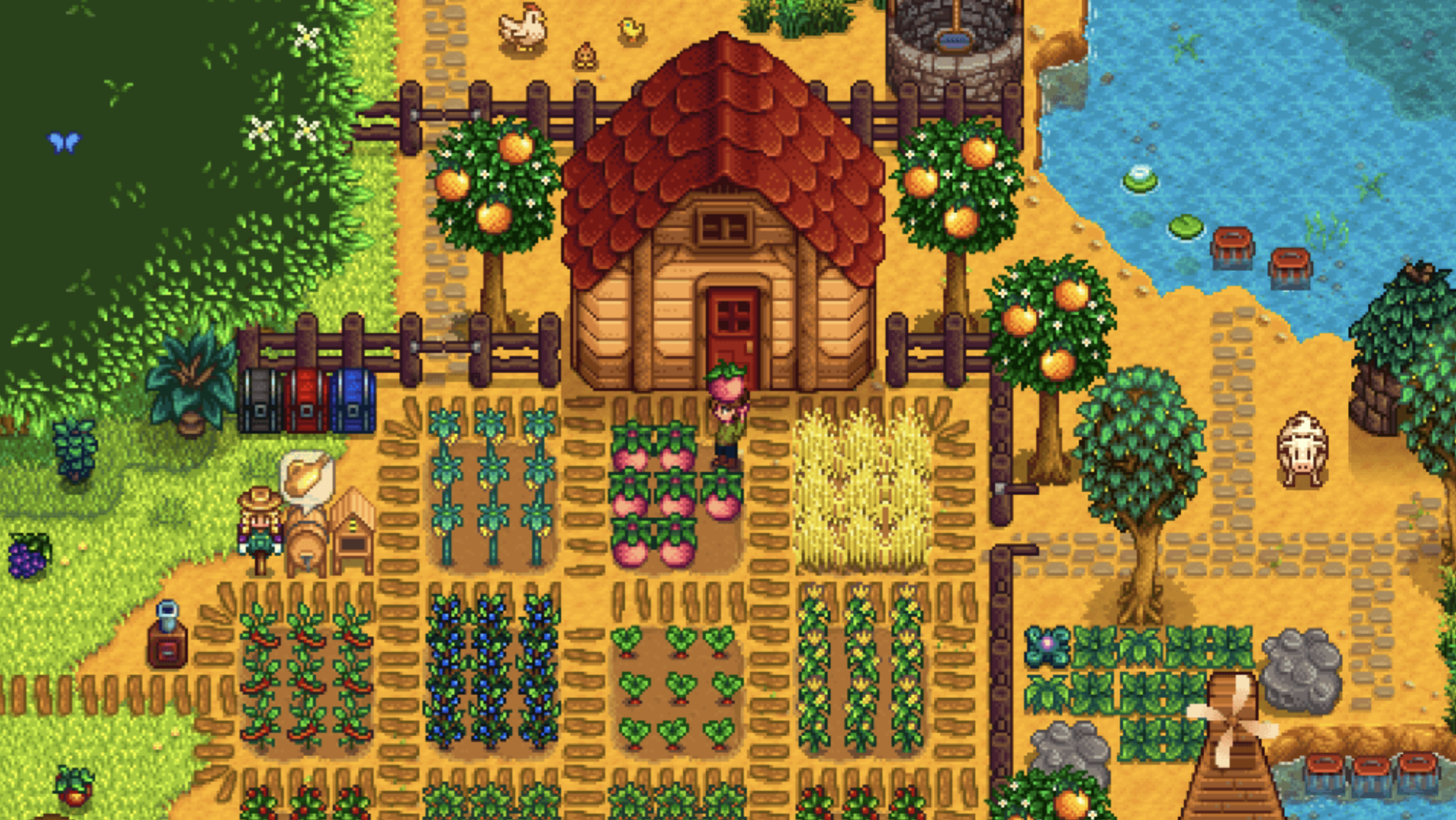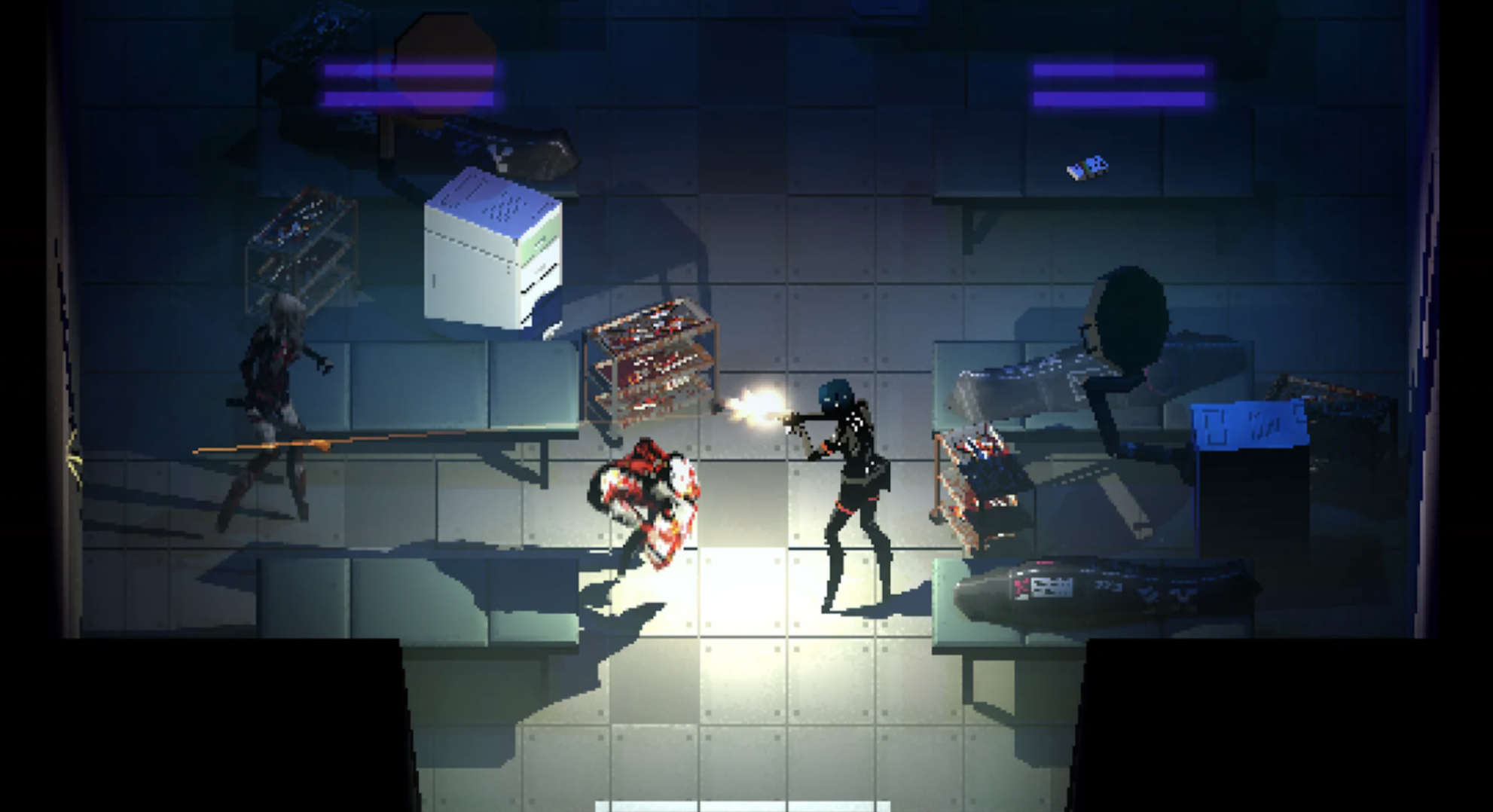The podcast series Digital Soundscape consists of 5 different episodes, which aim to offer deeper insights into digital sounds generated in/by digital space. With team members Annabel, Agustina, Cara, Viktoria, and Jiyoung, we use our five different episodes as an ongoing conversation among us. We divided our team into two groups(Cara, Viktoria, Jiyoung / Annabel, Augustina) and at the end of each episode, we asked the question to another group. Therefore, each episode is both the answer to the previous episode and the question for the next episode.
Our podcast series touches upon personal experience with digital sound, as well as the socio-cultural aspects of digitally generated sounds. Based on our research over the course of 4 episodes, in the last episode we will share our soundscape work as a result of this whole conversation.

In this episode, Augustina and I (Annabel) met to talk about game sound design – how it affects playing experience, the choice between ambient sound and music, and how it can reinforce narrative aspects of the game.
Ambience & diegesis
Augustina showed me four games in the podcast: Scorn (2022), Stardew Valley (2016), A Plague Tale: Requiem (2022) and Signalis (2022). Scorn and Signalis are horror games with only ambient, diegetic sound design. Diegesis in sound design means that all sounds originate from within the game’s internal world. For instance, in Scorn the ambient sound is caused by the environment with which the character interacts, giving the impression that the environment itself is alive – which makes sense given the game’s Cthulhu aesthetics. In Signalis, the controller vibrates in the player’s hand to the rhythm of a heartbeat, immersing the player into the body of the character.

Image source: https://www.eurogamer.net/horror-game-scorn-will-now-release-a-week-earlier-than-expected
Music, narrative & speech
Stardew Valley and A Plague Tale both make use of music in their sound design. In Stardew Valley, music changed from location to location, allowing the player to use audio to orient themselves in the space. Non-diegetic sound such as music in these two games can create feelings of anxiety as it increases in sound and intensity, thereby immersing the player with feelings in line with the narrative. A Plague Tale uses speech to provide information to help you play, but speech also has a symbolic function too; if your character and the helper character start talking a lot, it is a reminder to move on from that location, to keep the story moving.

Image source: https://www.stardewvalley.net/

Image source: https://www.focus-entmt.com/en/games/a-plague-tale-requiem
Haunting silences
We also noticed how silence is used in sound design. In Signalis, you might not even notice the haunting ambient sound until you notice its absence in one room. In there, it is completely silent and the player suddenly feels isolated and that something is about to happen. We also spoke about silence as a creative choice at the beginning of the podcast, when I mentioned the case study (inspired by the case studies from the previous group in episode 3) of the Disintegration Loops. These were made by William Basinski when he tried to digitise some analogue magnetic tapes he had previously recorded. The tapes had degraded over time and the process of digitisation destroyed the tape further, resulting in silences and gaps in the recording. It gives the feeling that the sound itself is decomposing and that it has a life of its own. In games such as Signalis, the absence of sound also becomes a presence, both a feeling of being alone and a dread that you might not be.

Image source: https://www.polygon.com/reviews/23402312/survival-horror-game-signalis-review-game-pass-platforms-release-date
Sounds in games demonstrate a new relationship between human beings and digital sounds, as they play an important role in creating a sense of the real and the immersive for digital worlds. Even though sounds for the digital world might be created by an analogue process, they are not necessarily the sound of the relative objects (as game sound design is made by foley artists). What you see in the digital world simulates. The question can be asked: are those sounds more real or less real?
Thanks for listening to the fourth episode of our Digital Soundscape series!


I absolutely love this series, and this episode did not disappoint either! I really enjoy the formatting and setup of it all. If you found these games interesting sound-wise, you might also enjoy The Stanley Parable, which uses sound to guide you in a very unique way!